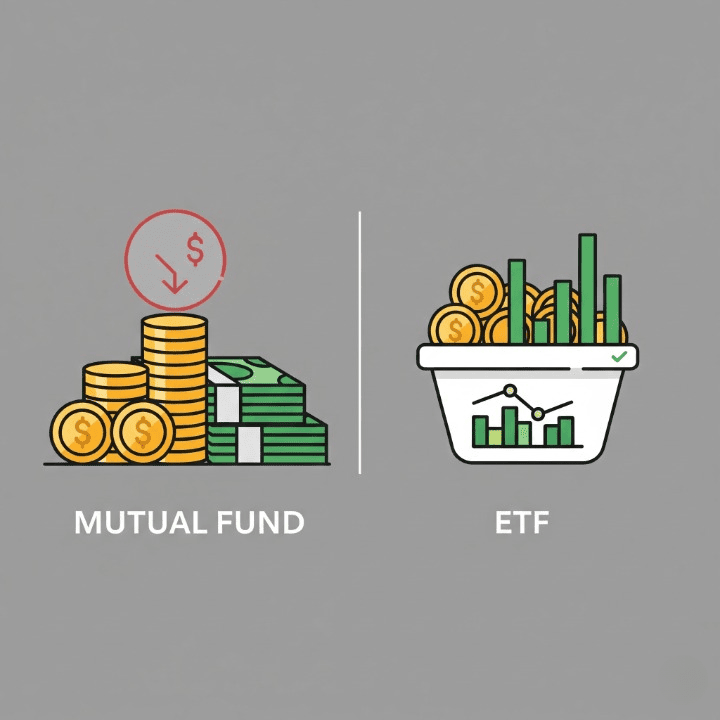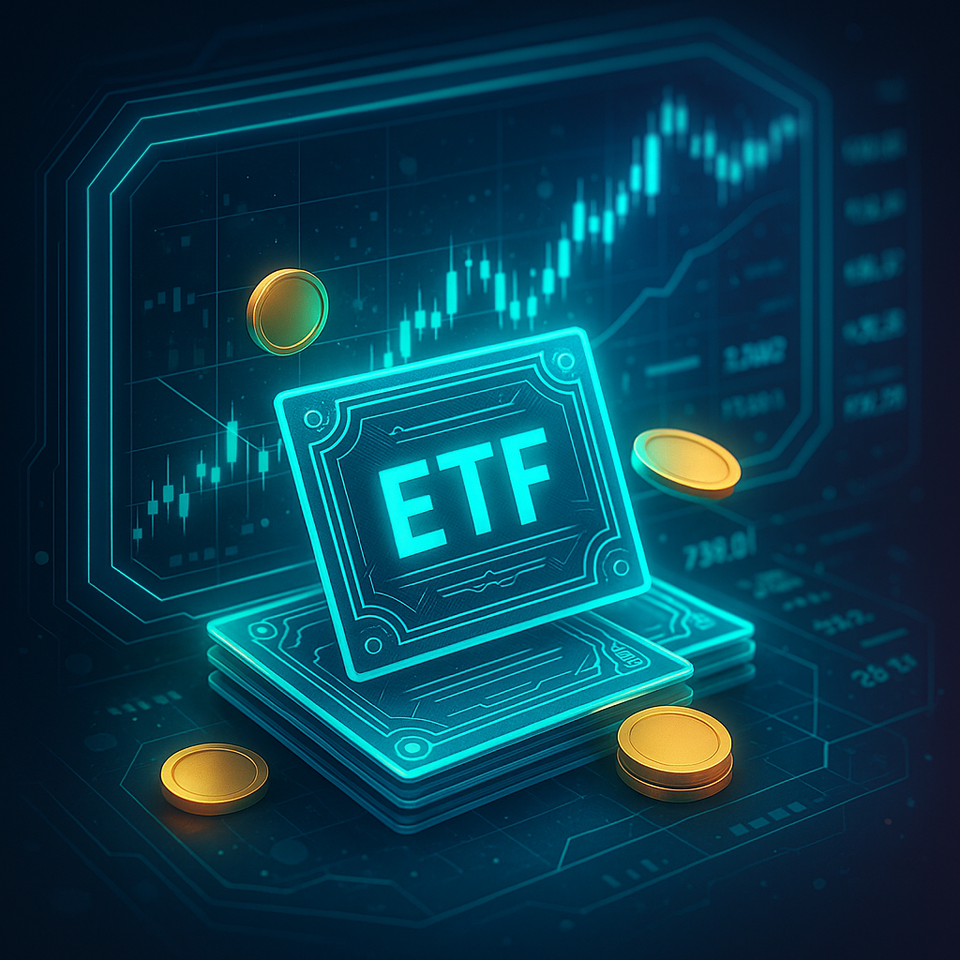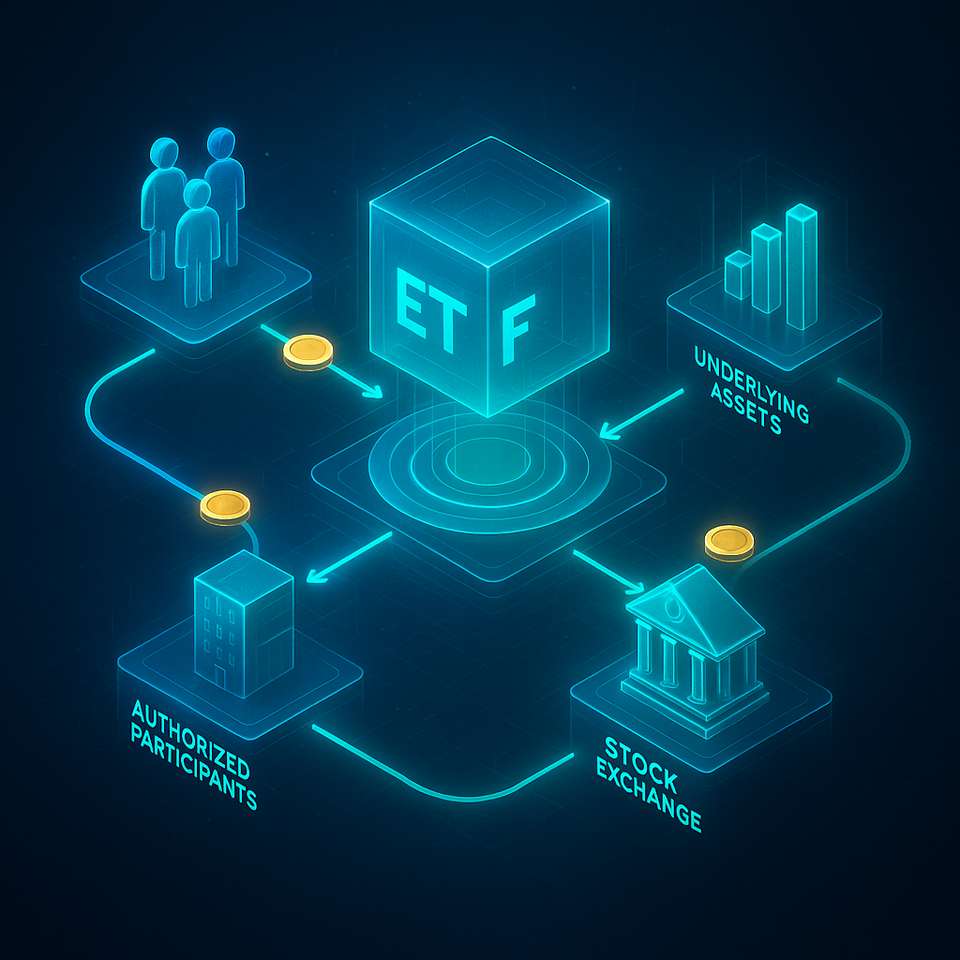
Introduction
Starting your investment journey can feel both exciting and overwhelming. You’ve heard about the importance of building a diversified portfolio, but you face a critical question: how should you invest your money? The choice between Exchange-Traded Funds (ETFs) and mutual funds is one of the most fundamental decisions you will make. While both allow you to invest in a basket of stocks, bonds, or other assets, they work in fundamentally different ways. The fees, flexibility, and tax implications of each can significantly impact your long-term returns. This comprehensive guide will demystify ETFs and mutual funds, explaining their core mechanics, key differences, and the pros and cons of each. Our goal is to empower you with the knowledge to make an informed choice that aligns with your financial goals, risk tolerance, and investment style.
What is a Mutual Fund?
A mutual fund is a type of investment vehicle that pools money from multiple investors to invest in securities like stocks, bonds, or money market instruments. A professional fund manager then actively or passively manages this pool of money.
How a Mutual Fund Works
When you buy shares of a mutual fund, you are essentially buying a small piece of a large, diversified portfolio. The fund manager decides which securities to buy and sell, based on the fund’s stated investment strategy. The price of a mutual fund share, known as its Net Asset Value (NAV), is calculated once per day, at the end of the trading day. You buy or sell shares at this daily price.
Key Benefits of Mutual Funds
- Professional Management: Many mutual funds are actively managed, meaning a team of experts makes all the investing decisions. This can be appealing for those who don’t have the time or expertise to research individual stocks.
- Easy Diversification: With a single purchase, you get instant diversification into a broad range of assets. This helps reduce risk.
- Discipline: Because mutual funds are traded only once per day, they can discourage frequent, emotional trading, which is often detrimental to long-term returns.
- Convenience: Mutual funds are easy to buy directly from a brokerage firm or a fund company.
Key Drawbacks of Mutual Funds
- High Fees: Many actively managed mutual funds have high expense ratios, which are annual fees charged as a percentage of your assets. These fees, often over 1%, can eat into your returns over time.
- Lack of Trading Flexibility: You can only buy or sell shares once per day, after the market closes.
- Potential for Capital Gains Taxes: Even if you don’t sell your shares, a mutual fund may distribute capital gains to you when its manager sells securities. This can create an unexpected tax bill.
- Minimum Investment Requirements: Some mutual funds require a high initial investment, which can be a barrier for new investors.
What is an Exchange-Traded Fund (ETF)?
An ETF is also a pooled investment vehicle, but it trades on a stock exchange, just like a regular stock. Most ETFs are passively managed and designed to track the performance of a specific index, such as the S&P 500 or the Nasdaq 100.
How an ETF Works
When you buy an ETF, you are buying a share in a fund that holds the underlying assets of an index. Because they trade like stocks, you can buy and sell them throughout the day at market prices, which constantly fluctuate. The price of an ETF is typically close to its underlying NAV, but it can deviate slightly based on market demand.
Key Benefits of ETFs
- Lower Fees: Most ETFs are passively managed, which results in significantly lower expense ratios compared to actively managed mutual funds. This can save you a lot of money over the long term.
- Trading Flexibility: You can buy and sell ETFs throughout the trading day, giving you more control over your entry and exit points. This is especially useful for short-term traders.
- Tax Efficiency: Because ETFs typically have lower turnover (they don’t buy and sell assets as frequently as actively managed funds), they tend to generate fewer capital gains for investors, which can be a major tax advantage.
- Low Minimums: You can often buy just a single share of an ETF, making them highly accessible for beginners with limited capital.
Key Drawbacks of ETFs
- Potential for Over-Trading: The ability to trade throughout the day can encourage emotional or excessive trading, which can lead to poor long-term results.
- Brokerage Commissions: While many brokerage firms now offer commission-free ETF trading, some still charge commissions.
- Potential for Price Deviations: In a volatile market, an ETF’s price can sometimes trade at a slight premium or discount to its actual Net Asset Value. This is a minor issue but is still a difference from a mutual fund.
- No Professional Management (for most): Most ETFs simply track an index. You are not paying a manager to try and beat the market.
ETF vs. Mutual Fund: A Head-to-Head Comparison
The choice between these two investment vehicles often comes down to a few key factors:
Cost and Fees
ETFs generally win here due to their low expense ratios. An actively managed mutual fund might charge a 1.25% annual fee, while a comparable S&P 500 ETF might charge just 0.03%. Over decades, this difference can add up to thousands or even hundreds of thousands of dollars in lost returns.
Trading Flexibility
ETFs are far more flexible for trading. If you want to invest a lump sum on a day when the market is down, you can do so immediately with an ETF. With a mutual fund, you will get the price at the end of the day, which may have changed.
Investment Style
If you believe a professional can consistently beat the market, an actively managed mutual fund might be for you. However, decades of data suggest that most active managers fail to beat their benchmark indexes over the long run. If you prefer to capture the broad returns of the market at the lowest cost, an ETF is the better choice. For most long-term investors, a passive strategy is more effective.
Tax Implications
ETFs are generally more tax-efficient. This is a significant advantage for investors in taxable brokerage accounts. Mutual fund investors can face unexpected capital gains distributions, which can increase their tax burden even in a year when they didn’t sell any shares.
Final Verdict: Which Is Right for You?
For the average investor focused on building wealth for the long term, ETFs are often the superior choice. Their low fees, tax efficiency, and easy access make them a powerful tool for building a well-diversified portfolio. They are an ideal vehicle for a financial planning strategy that emphasizes low costs and passive investing.
However, this doesn’t mean mutual funds are without their place. They can still be a good option within a tax-advantaged retirement account, like a 401(k), where taxes on capital gains are not an issue. In this case, you can focus more on the fund’s performance and strategy. Ultimately, the best choice depends on your specific goals and financial situation. Taking the time to understand these differences is a crucial step toward becoming a more informed and successful investor.



